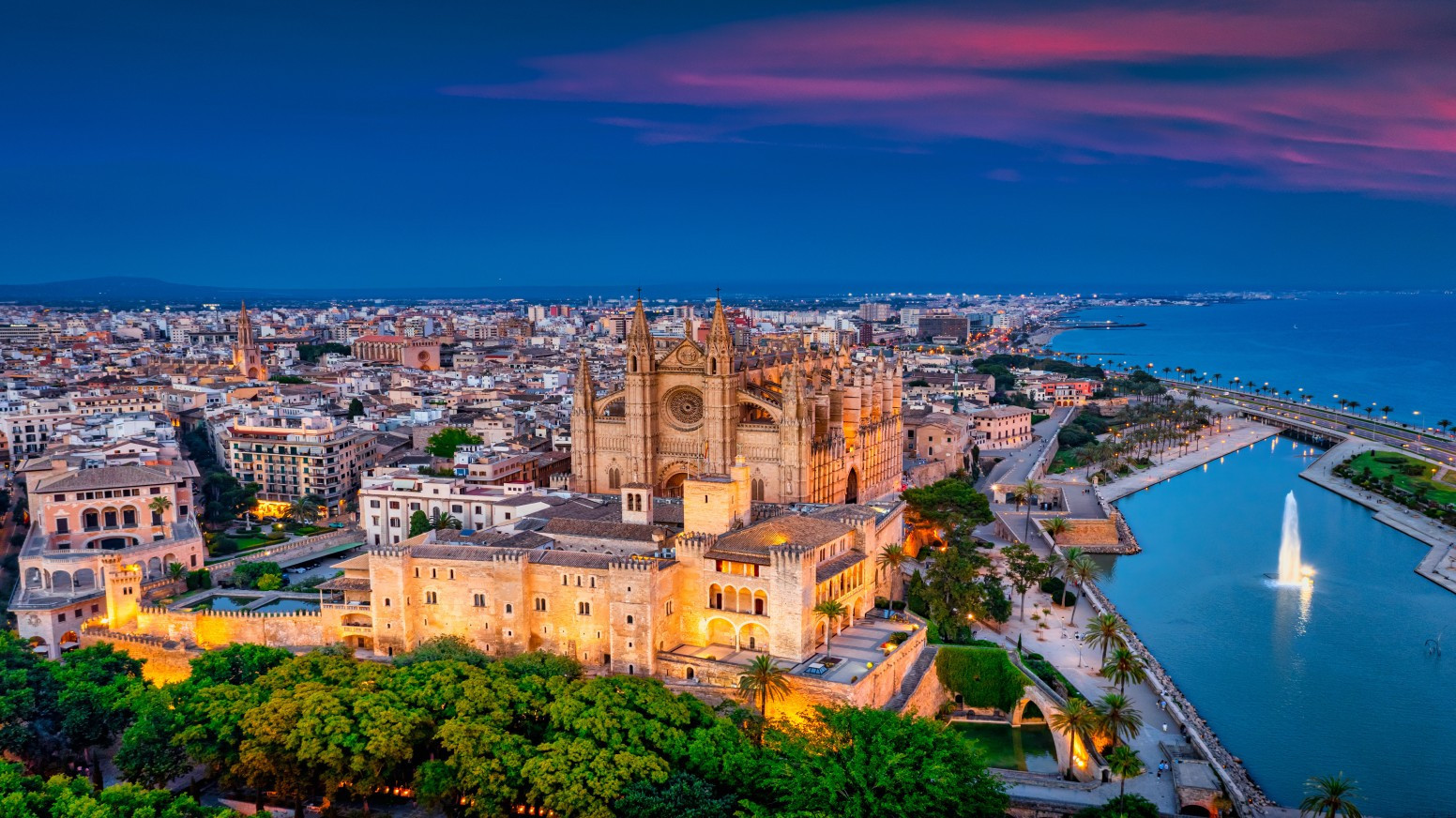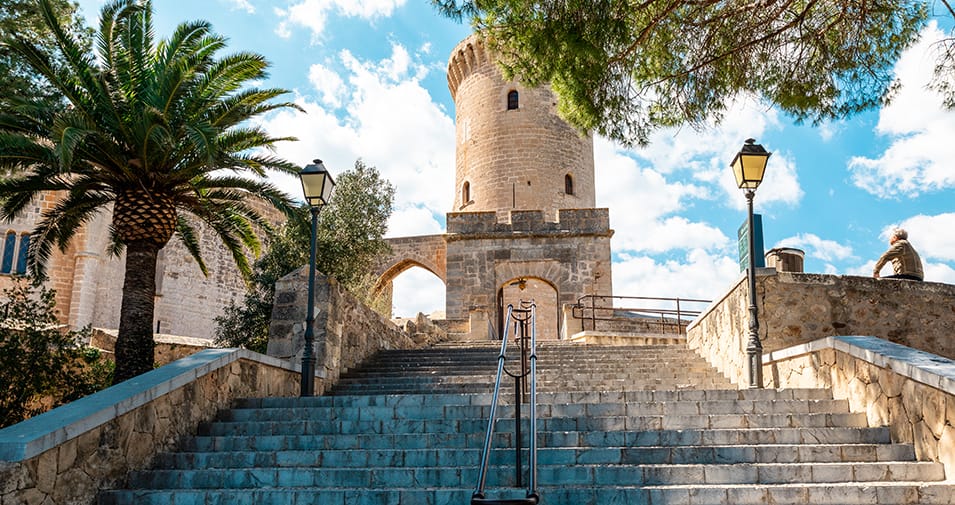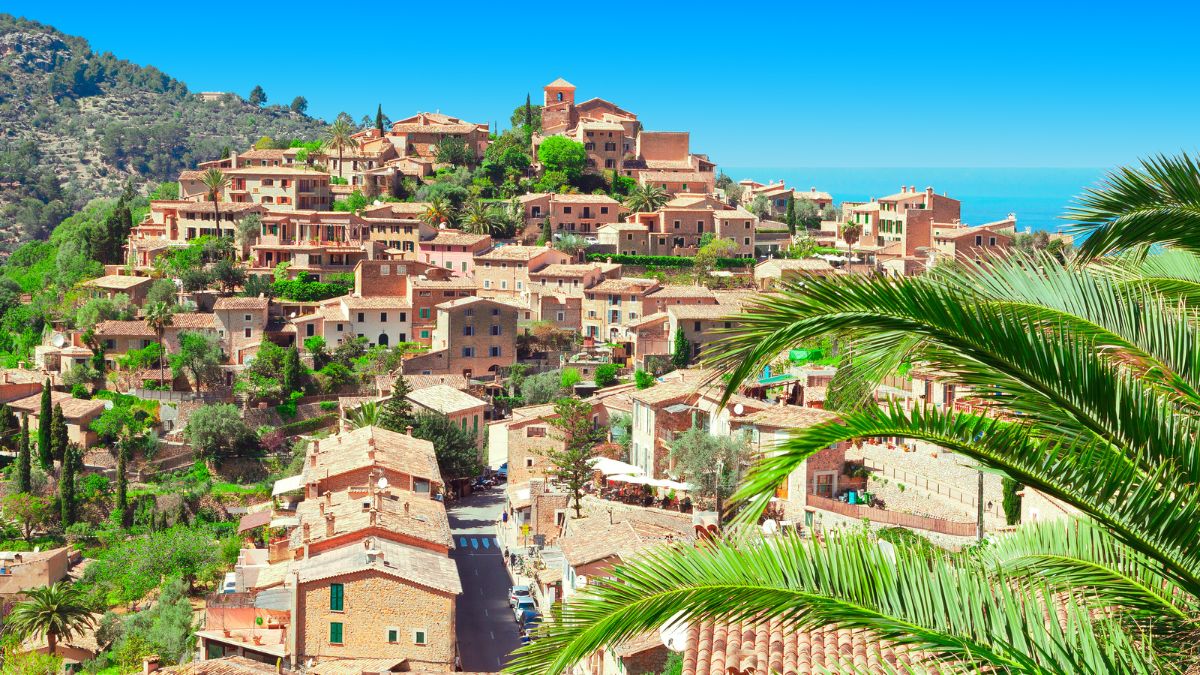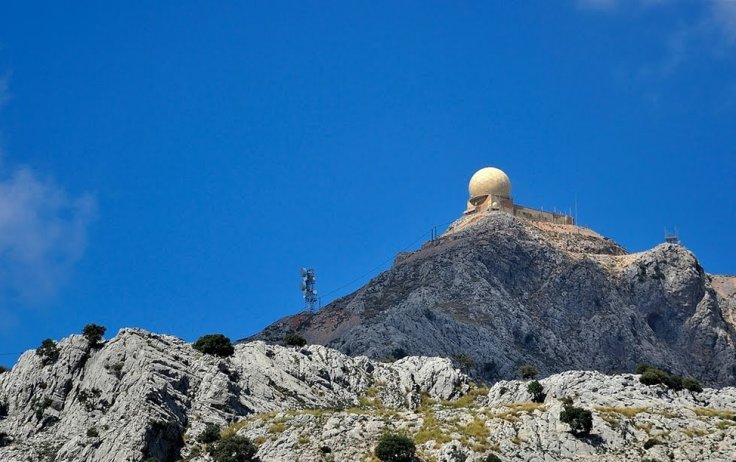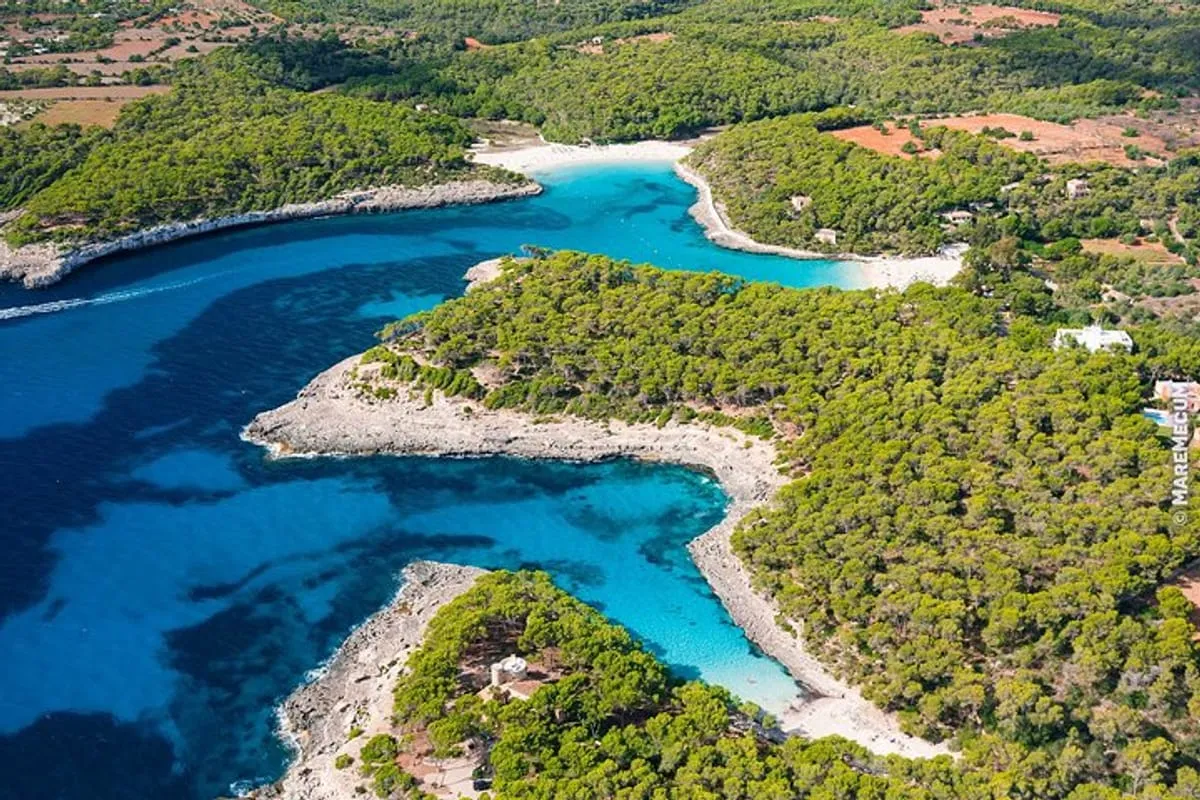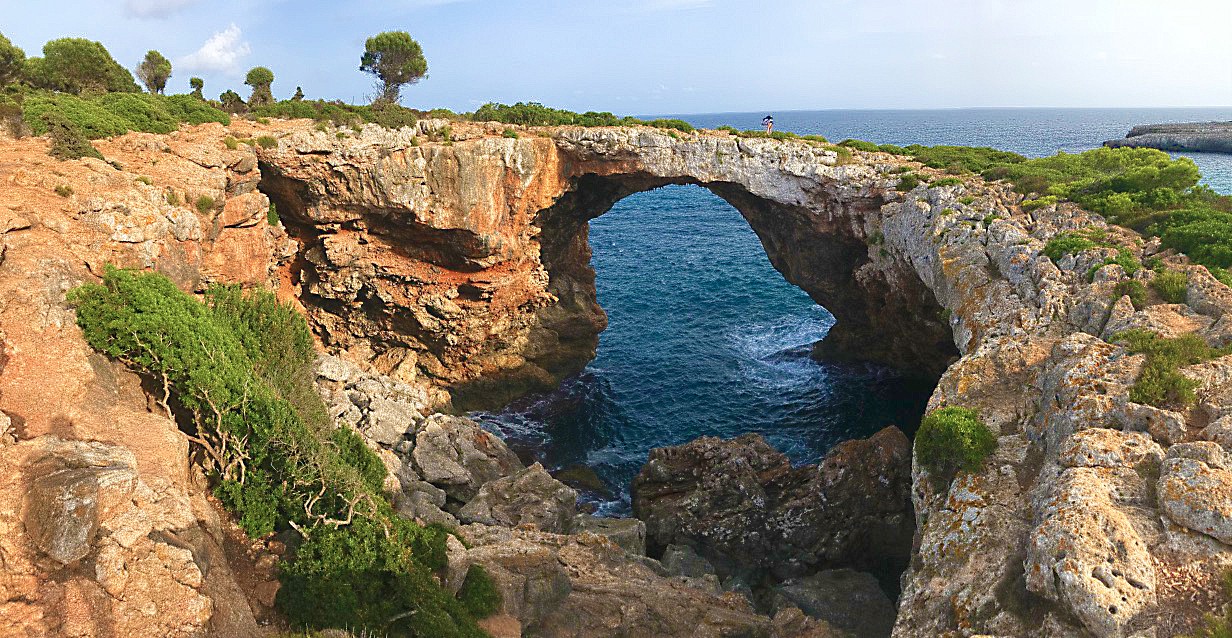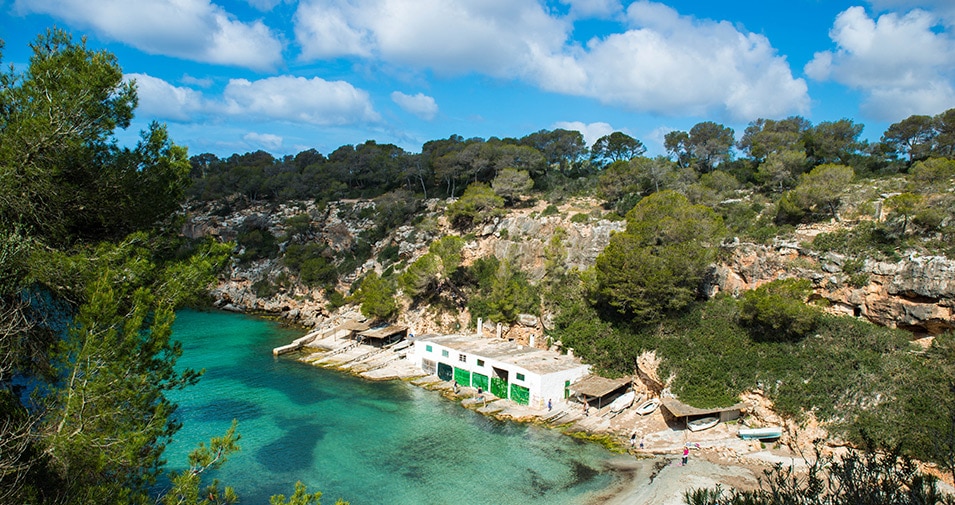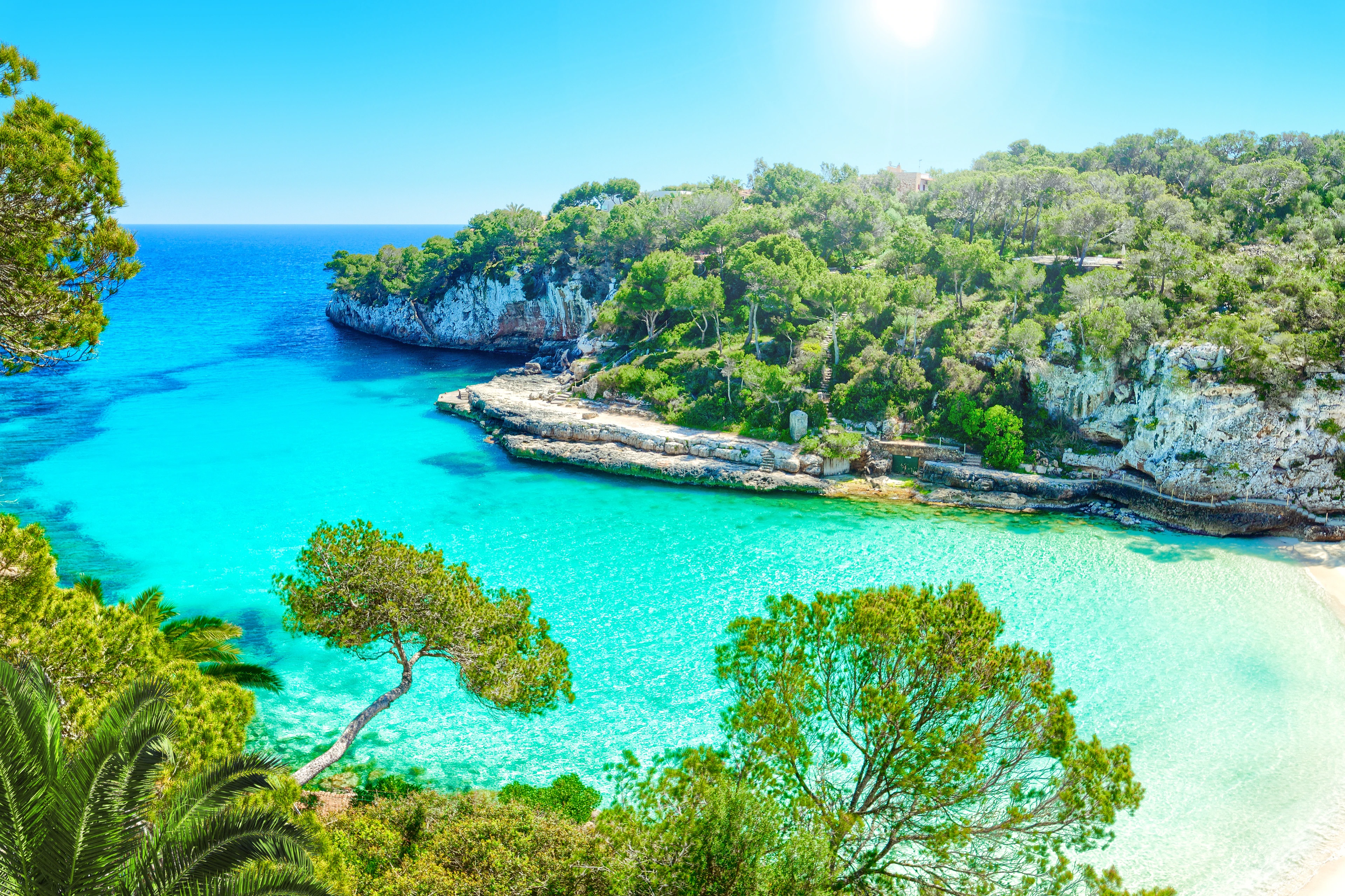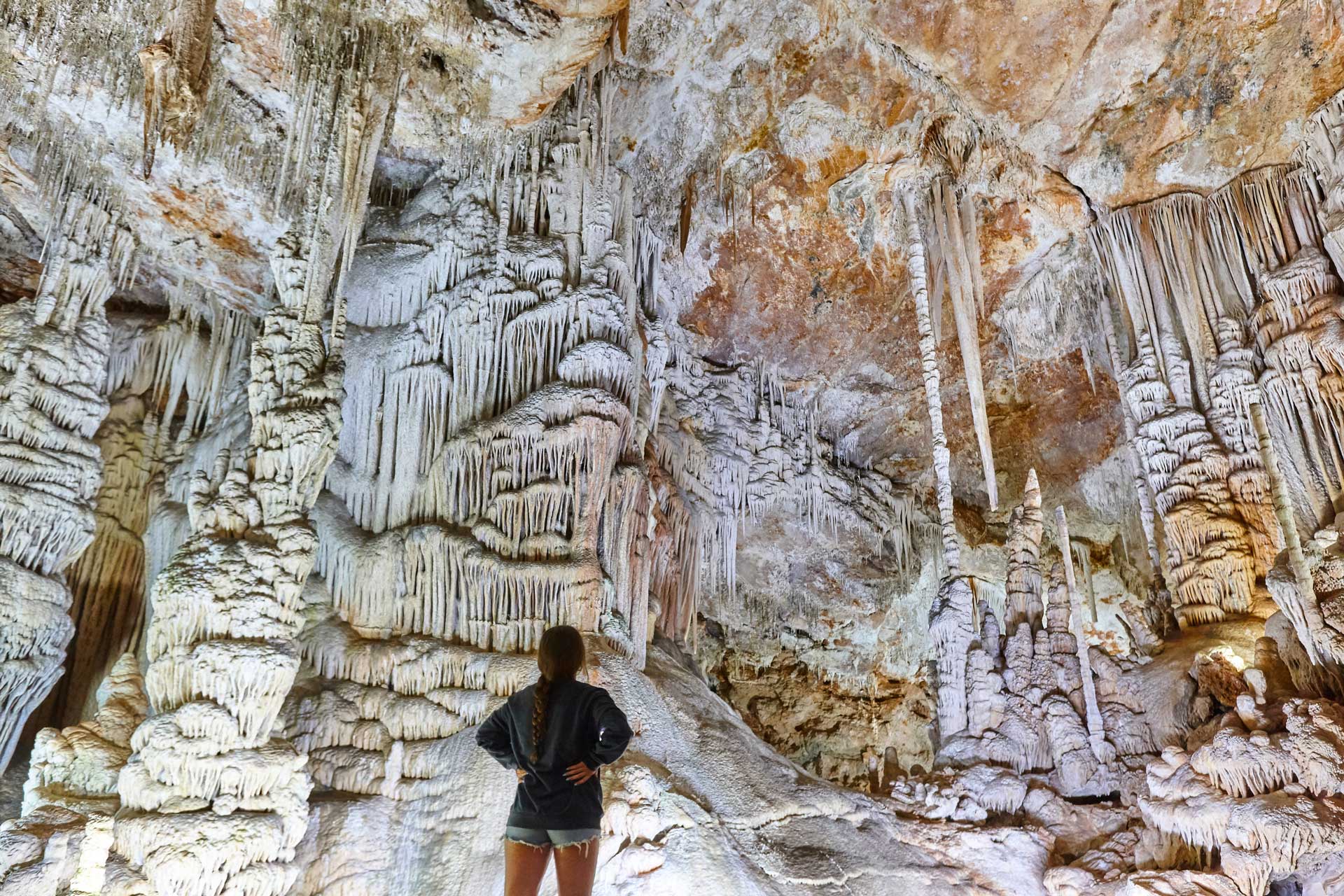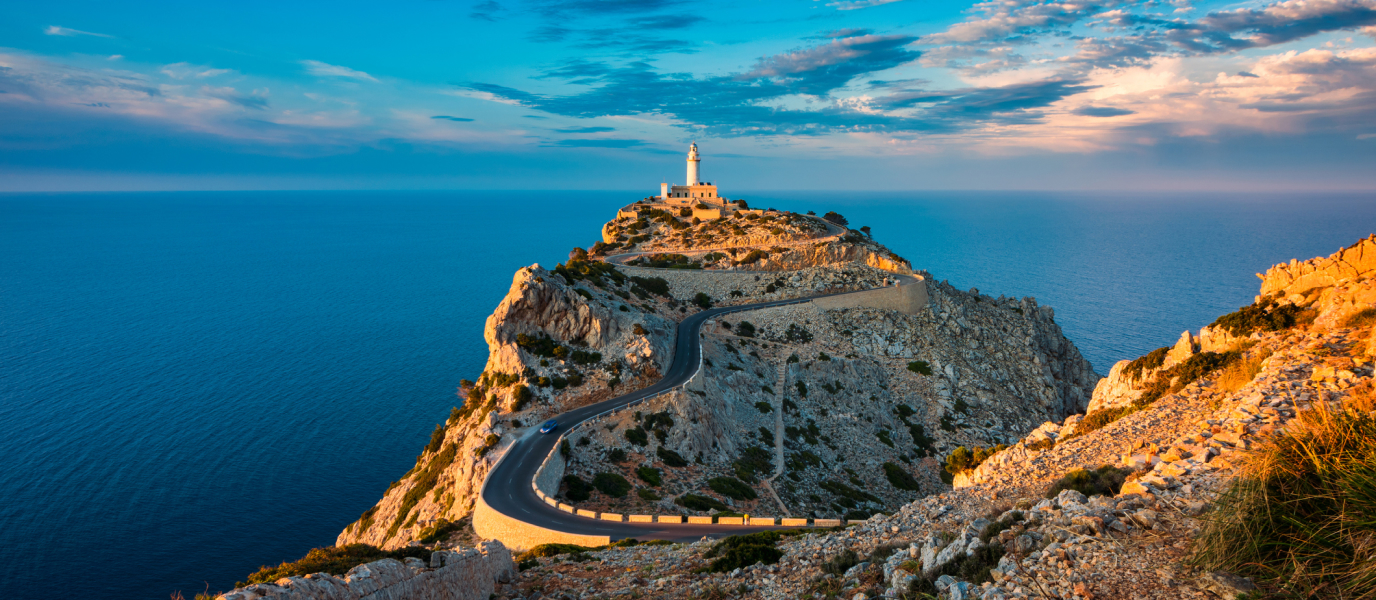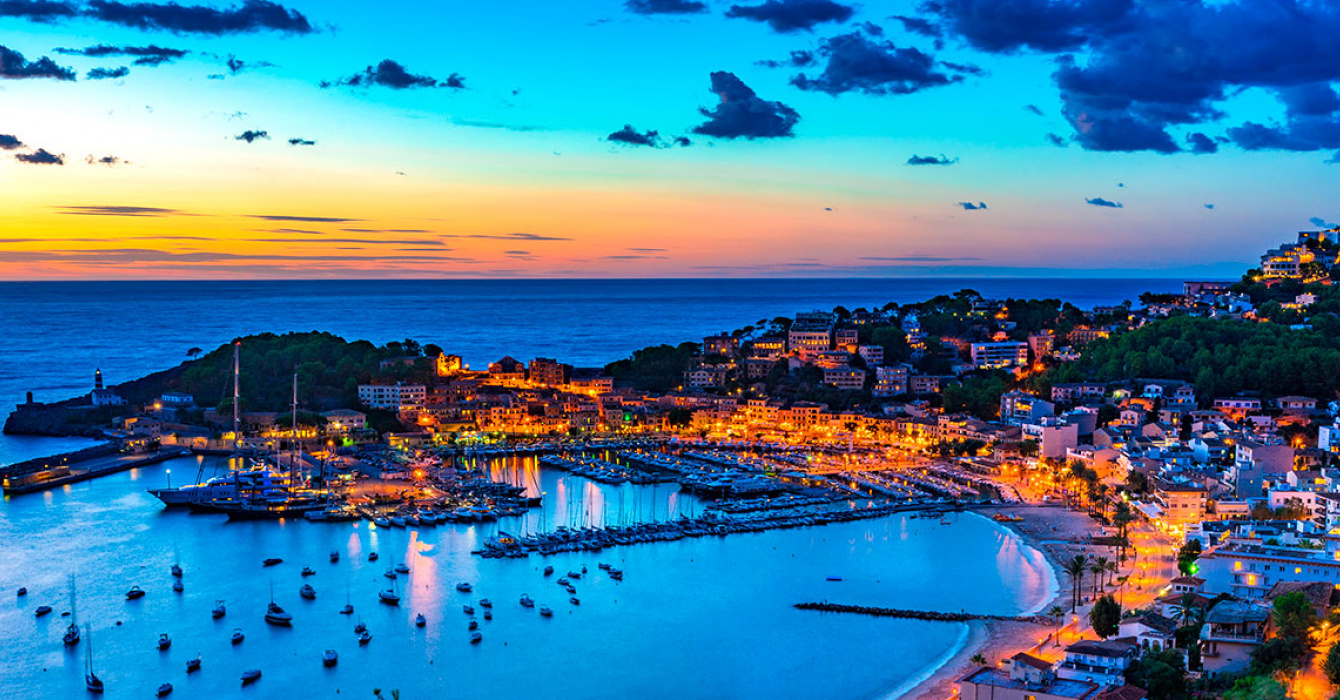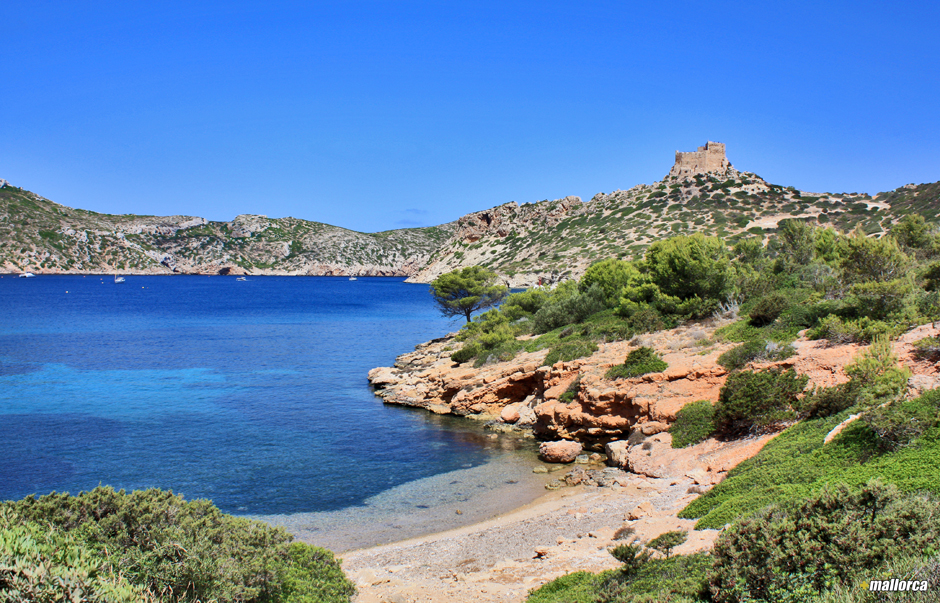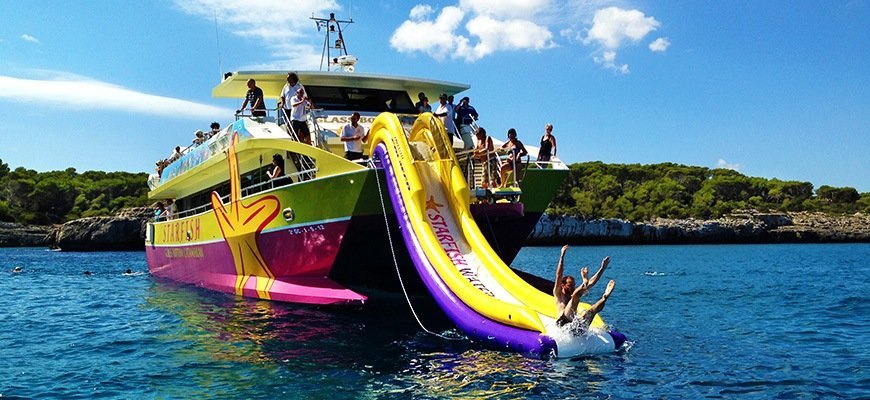Top Attractions On The Island Of Mallorca [Must-See In 2025]
Find top attractions on the island of Mallorca, from stunning beaches to historic sites. Plan your unforgettable trip with these highlights.
Author:Maya ReyesReviewer:Finn WildeApr 10, 20251.4K Shares122.9K Views
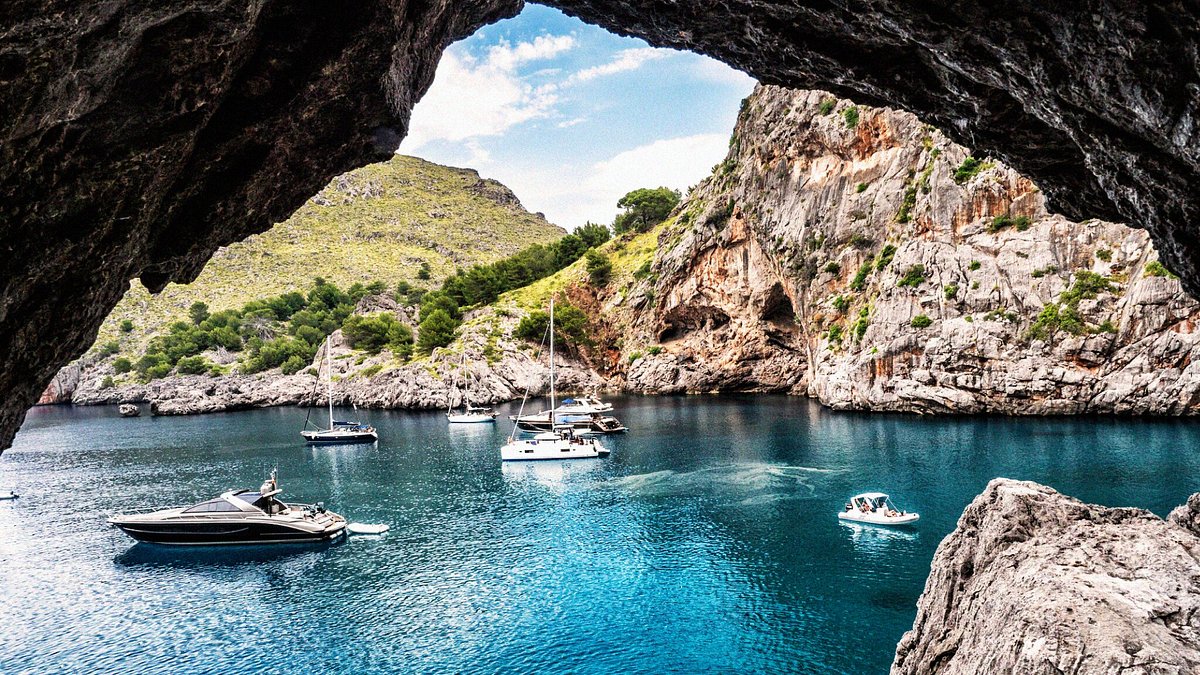
Mallorca, the largest island in the Balearic archipelago, offers a captivating mix of natural beauty, rich history, and vibrant culture. From dramatic coastlines and pristine beachesto charming villages and rugged mountains, there is no shortage of unforgettable sights and experiences.
If you’re planning a trip, knowing what to see on the island of Mallorcawill help you uncover its true essence, with activities and attractions that cater to all interests.
Top Attractions In Mallorca
Palma De Mallorca - A City Of Culture & History
The lively capital of the island, Palma, is a center of history, culture, and cuisine. It is the perfect place to start a tour of Mallorca because of its blend of Moorish, Gothic, and modern elements. For those seeking a sustainable travelexperience, Palma also offers a growing selection of eco-friendly accommodations, allowing visitors to minimize their environmental impact while enjoying the city's vibrant atmosphere.
1. La Seu Cathedral (Catedral-Basílica De Santa María De Mallorca)
This towering Gothic masterpiece dominates Palma’s skyline. Built between the 13th and 17th centuries, it features the world’s largest Gothic rose window with 1,236 pieces of stained glass, casting breathtaking light patterns inside. Antoni Gaudí’s redesign of the interiors adds an artistic touch to its grandeur.
2. Palacio Real De La Almudaina
Originally a Moorish fortress, this royal palace stands as a testament to Mallorca’s complex history. Visitors can explore its medieval halls, admire Arabic arches, and enjoy panoramic views over the bay.
3. Es Baluard Museum Of Modern & Contemporary Art
Housed in a former fortress, this museum features an impressive collection of contemporary works from Spanish and international artists, blending art with history.
4. Passeig Del Born & La Lonja
These lively districts are known for their upscale boutiques, cozy cafés, and authentic tapas bars. La Lonja, a stunning 15th-century maritime trade hall, showcases beautiful Gothic architecture.
5. Castell De Bellver
One of the only circular castles in Europe, this 14th-century fortress sits atop a hill overlooking Palma. It now houses a history museum detailing Mallorca’s past and offers some of the best views over the city and sea.
The Serra De Tramuntana - A UNESCO World Heritage Site
The rocky mountain range known as the Serra de Tramuntana, which stretches across the northwest of Mallorca, is home to charming communities, striking cliffs, and beautiful hiking routes.
6. Valldemossa
This quaint mountain village is best known for the Carthusian Monastery, where composer Frédéric Chopin and writer George Sandspent a winter in 1838. The cobbled streets, stone houses, and lush surroundings make it a perfect retreat.
7. Deià
A small, enchanting village that has attracted artists, writers, and musicians for decades. Surrounded by terraced olive groves and dramatic cliffs, Deià offers stunning coastal views and a peaceful atmosphere.
8. Sóller & Port De Sóller
Famous for its ancient wooden rail that travels to Palma, Sóller is a beautiful hamlet surrounded by orange groves. A crescent-shaped bay with seafood eateries is available nearby in Port de Sóller, which is the ideal location for dining by the sea.
9. Sa Calobra & Torrent De Pareis
One of the most dramatic natural formations in Mallorca, this hidden cove is reached via a winding mountain road or by boat. The towering cliffs of Torrent de Pareis create a spectacular backdrop, making it a favorite among photographers.
10. Puig Major & Fornalutx
Puig Major is Mallorca’s highest peak (1,436m), offering stunning panoramic views. Nearby, the stone-built village of Fornalutx is considered one of Spain’s prettiest, surrounded by orange and lemon groves.
Coves And Beaches Of Mallorca
Mallorca boasts over 550 km of coastline, featuring pristine beachesand secluded coves, known locally as "calas." These hidden gems, surrounded by cliffs, pine forests, and crystal-clear waters, offer some of the most stunning coastal scenery. Among the many coves to see in Mallorca, you'll find peaceful retreats perfect for swimming, snorkeling, or simply enjoying the island’s natural beauty.
1. Cala Mondragó
This cove, which has smooth white sand and shallow, blue waters, is located within Mondragó Natural Park. Nature trails wind across the surrounding parkland, giving it a haven for both beachcombers and hikers.
2. Cala Varques
This secluded cove on Mallorca's east coast is a hidden gem, accessible only by a scenic 20-minute walk through the rugged landscape. With crystal-clear waters, natural rock arches, and dramatic sea caves, it offers the perfect setting for snorkeling and cliff jumping, making it a must-visit for those seeking adventure in a pristine, untouched environment.
3. Cala Pi
This stunning inlet boasts golden sands and vibrant emerald waters, framed by towering cliffs that add to its dramatic beauty. The calm, clear waters make it an ideal location for swimming and paddleboarding, allowing visitors to enjoy a peaceful, refreshing experience surrounded by nature's grandeur.
4. Cala Llombards
With its smooth golden beaches and deep blue, clear seas that create a peaceful ambiance, this quiet cove is a hidden gem. The area, which is surrounded by rocky cliffs and dense pine trees, offers guests a tranquil haven where they may relax and take in the splendor of nature in total peace.
5. Cap De Formentor
Known as "the meeting point of the winds," this rugged peninsula features dramatic cliffs, hidden beaches, and panoramic sea views. Playa de Formentor is a beautiful, serene beach in this area, ideal for sunbathing and water sports.
Mallorca’s Spectacular Caves
Beneath Mallorca’s surface lies an intricate network of underground caves, formed over thousands of years. These caves are adorned with impressive stalactites, stalagmites, and underground lakes. Many of them are among the must see attractions on Mallorcamap, drawing visitors eager to witness their otherworldly beauty and fascinating geological formations.
- Cuevas del Drach (Dragon Caves)- Located in Porto Cristo, these caves house one of the largest underground lakes in the world, Lake Martel. Visitors can take a guided boat tour and experience a live classical music performance in this magical underground setting.
- Cuevas de Artà- These massive caves are famous for their towering limestone formations. Some stalactites reach over 22 meters in height, creating an almost cathedral-like interior.
- Cuevas de Campanet- A lesser-known gem featuring intricate limestone formations and a more intimate experience with fewer crowds.
Outdoor Activities & Adventures In Mallorca
Hiking & Cycling In Mallorca
Mallorca is one of the greatest destinationsin Europe for hiking and cycling because of its natural mountains and charming coastal roads. Trails on the island range in difficulty from casual strolls to strenuous mountain hikes.
1. Hike To Castell D'Alaró
This moderate hike leads to the ruins of a historic fortress sitting high on a mountain. The trail starts in the village of Alaró and winds through olive groves and rocky terrain. At the top, you’ll be rewarded with stunning panoramic views of the island. There’s also a small restaurant near the castle where you can enjoy traditional Mallorcan food.
2. Cami De S’Arxiduc
One of the most scenic ridge hikes in Mallorca, this trail near Deià was originally built by Austrian Archduke Ludwig Salvator in the 19th century. It follows the edge of a mountain, offering breathtaking views of the sea and the rugged coastline. The hike is challenging but well worth the effort for the incredible scenery.
3. Torrent De Pareis
This is one of Mallorca’s most spectacular hikes, taking you through a dramatic gorge with towering cliffs on either side. The route starts in the mountains and descends through rocky terrain, eventually leading to the beautiful cove of Sa Calobra. This hike is for experienced hikers as it requires scrambling over boulders and navigating narrow paths.
Cycling Routes In Mallorca
1. Cap De Formentor Cycling Route
2. Sa Calobra Cycling Route
2. Sa Calobra Cycling Route
Known as one of the toughest climbs in cycling, this route features a series of tight switchbacks that descend into a stunning valley before a steep climb back up. It’s a favorite among experienced cyclists looking for a challenge.
3. Palma To Port De Sóller
Water Sports & Boat Trips In Mallorca
Snorkeling & Scuba Diving
- Malgrats Islands- This marine reserve near Santa Ponsa is home to an abundance of sea life, including colorful fish, octopuses, and starfish. The clear waters make it a perfect spot for snorkeling and diving.
- Cabrera National Park- A protected island south of Mallorca, Cabrera offers some of the best diving spots in the region. The underwater caves and reefs are filled with marine species, making it a paradise for divers. There are also boat tours that take visitors to the famous Blue Cave, where the sunlight creates a mesmerizing blue glow inside the cavern.
Sailing Excursions
Sailing is one of the best ways to enjoy Mallorca’s coastline, hidden coves, and sea caves. Many boat tours depart from Palma, Port de Sóller, and Alcúdia, offering different experiences, from luxury yacht trips to traditional wooden boat tours.
- Palma Bay Sunset Cruise- A relaxing evening boat trip where you can enjoy the sunset over the Mediterranean while sipping a drink on board.
- Port de Sóller to Sa Calobra- A scenic boat trip that takes you along the dramatic cliffs of the Tramuntana coast, stopping at the stunning cove of Sa Calobra.
- Cala d’Or Sailing Tour- A private sailing adventure that allows you to view the southeast coast of Mallorca while swimming, snorkeling, and eating lunch on board.
Kayaking & Paddleboarding
For those who prefer a more active way to enjoy the sea, kayaking and paddleboarding are great options.
- Cala Sant Vicenç- This area is perfect for paddleboarding, with calm, shallow waters and a scenic rocky coastline. It’s an excellent place for beginners.
- Es Trenc Beach- Known for its white sand and turquoise waters, Es Trenc is ideal for kayaking. You can paddle along the coast, stopping at hidden beaches along the way.
- Cala Varques- A secluded cove with natural rock arches and caves, perfect for exploring by kayak. The peaceful waters and stunning surroundings make it a fantastic experience.
Practical Tips For Planning Your Mallorca Trip
A little planning goes a long way in making your trip to Mallorca smooth and enjoyable. From the best times to visit to transportation and accommodation options, here’s everything you need to know before setting off.
Best Time To Visit
Mallorca enjoys a Mediterranean climate with hot summers and mild winters, but the best time to visit depends on what you want to do:
- Spring (April-June):Warm temperatures, blooming landscapes, and fewer tourists make this an ideal season for sightseeing, hiking, and cycling.
- Summer (July-August):Peak tourist season with hot weather and lively beach resorts. It’s perfect for sunbathing and water sports, but expect crowded beaches and higher prices.
- Autumn (September-October):The sea remains warm from summer, and the crowds start to thin out, making it a great time for swimming, sailing, and exploring cultural sites.
- Winter (November-March):A quieter season with mild temperatures. Some coastal resorts close, but Palma and mountain villages remain vibrant. It’s a great time for hiking and experiencing local traditions.
Transportation - Getting Around The Island
Mallorca's transportation system is well-connected, but your itinerary and preferred method of travel will determine how best to get around.
- Renting a Car:The easiest method for seeing Mallorca's secluded beaches, mountain villages, and secret coves. Although the roads are kept up nicely, parking in busy areas might be challenging.
- Public Transport:Buses connect major towns and tourist areas, with regular services from Palma to Sóller, Alcúdia, and Cala Millor. However, routes to smaller villages are limited.
- Train & Vintage Tram:The historic Sóller Train offers a scenic journey through the Tramuntana mountains from Palma to Sóller, where you can switch to a vintage tram heading to Port de Sóller.
- Cycling:Mallorca is a top destination for cyclists, with well-marked routes through the mountains and coastal areas. Rental shops offer everything from road bikes to e-bikes.
- Taxis & Ride-Sharing:Taxis are widely available but can be expensive for long distances. Ride-sharing services are not as common as in larger cities.
Where To Stay - Best Areas & Accommodation Types
Mallorca offers diverse accommodation options, from luxury resorts to charming rural retreats. Choosing the right area depends on your preferences:
- Palma de Mallorca:Ideal for culture lovers and nightlife enthusiasts. Stay in the city center for easy access to historical sites, shopping, and restaurants.
- North Coast (Alcúdia & Pollença):Great for families and history buffs, with beautiful beaches, ancient ruins, and relaxed seaside towns.
- West Coast (Sóller, Deià, & Valldemossa):Perfect for nature lovers, hikers, and those seeking a peaceful retreat in the Tramuntana mountains.
- East Coast (Cala d’Or, Porto Cristo, & Cala Millor):Renowned for its charming coves, relaxed resorts, and clean beaches that make it the perfect destination for beach vacations.
- South Coast (Es Trenc & Colònia de Sant Jordi):Best for travelers looking for unspoiled beaches and a quieter, more natural setting.
- Luxury & Boutique Hotels:Many upscale resorts and boutique hotels offer spa services, infinity pools, and breathtaking sea views.
- Agroturismo & Fincas:Traditional farmhouses converted into guest accommodations provide a more authentic, countryside experience.
- Budget-Friendly Options:Hostels, guesthouses, and rental apartments are available for those traveling on a budget.
FAQs
What Is The Best Time To Visit Mallorca?
Spring (April-May) and autumn (September-October) offer ideal conditions with pleasant temperatures and fewer crowds. These months provide perfect weather for sightseeing and outdoor activities.
What Is Mallorca Best Known For?
The island of Mallorca might be one of Spain's most historic islands, but its capital city of Palma de Mallorca is best known for its beaches and bustling modern and cosmopolitan lifestyle.
How Much Money Do I Need For Mallorca?
How much spending money for a week in Majorca can totally vary on your type of holiday, length and board basis! To include an excursion and two meals a day in your spending money you'll need around £50 per person per day, so around £350 a week.
How Many Days In Mallorca Is Enough?
With a mild year-round climate and a choose-your-adventure atmosphere, this sun-soaked island is one of the best year-round destinations in Spain. To see the many faces of this island, I'd recommend spending at least one week in Mallorca but you could easily spend two weeks here soaking it all in.
What Are The Best Places To Visit In Mallorca For Couples?
Valldemossa, Cap de Formentor at sunset, and secluded beaches like Cala Varques offer romantic settings.
Final Thoughts
Mallorca is a place where every corner offers something worth experiencing, from breathtaking landscapes to historic landmarks and vibrant local culture. No matter what kind of adventure you seek, the island’s diverse offerings ensure an unforgettable visit.
To truly experience the enchantment of this Mediterranean paradise, be sure to check out its must-see sights and hidden treasures.

Maya Reyes
Author
Maya Reyes’s wanderlust was sparked in the temples of Luang Prabang, where the scent of lemongrass and the chants of monks revealed the transformative power of travel.
Since then, her journey has been defined by cultural immersion and authentic connections. From learning batik in Indonesia to sharing meals with nomadic families in Mongolia, Maya seeks experiences that highlight the human stories behind each destination.
Travel for her is a way to weave her narrative into the world’s cultural tapestry, creating bridges across diverse ways of life. Maya has traveled to 15 countries and shares her insights through writing and storytelling.
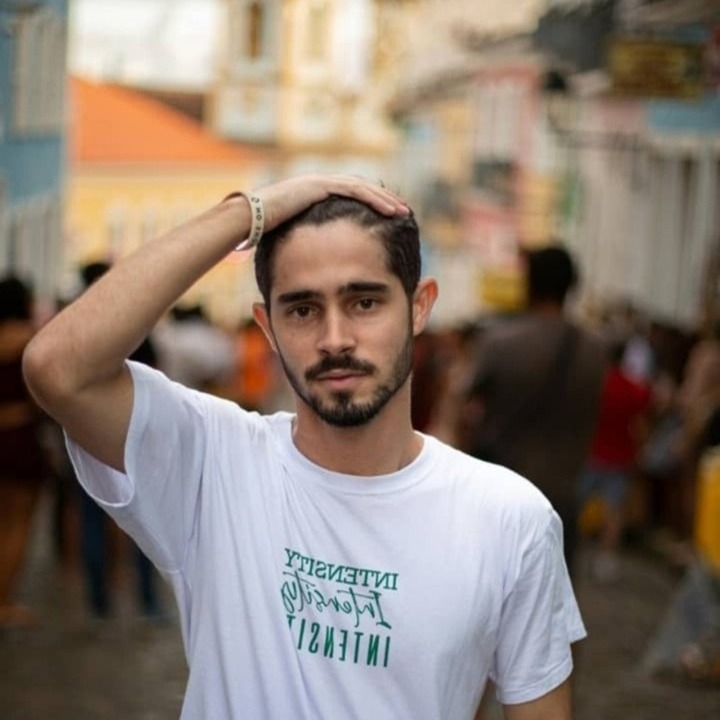
Finn Wilde
Reviewer
For Finn Wilde, the wilderness is more than just a destination - it’s a way of life. Over the past decade, he has led multiple expeditions in some of the world’s most remote regions, from the icy fjords of Greenland to the rugged trails of Patagonia.
Finn emphasizes sustainability in all of his adventures, helping participants connect with nature while promoting responsible exploration. His expeditions inspire individuals to explore the great outdoors while fostering a deep respect for the environment.
Latest Articles
Popular Articles
